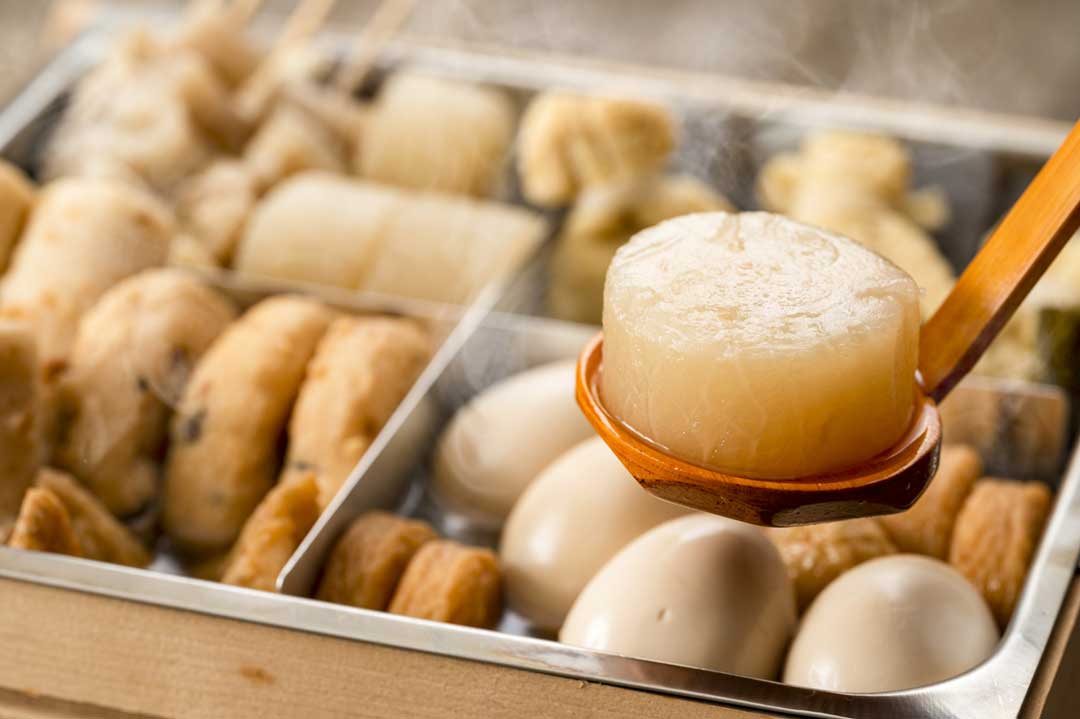
Embracing Japan’s Winter Tradition with “Oden”
Oden, whose name is derived from “Oden (御田)”, is a traditional Japanese dish that has been loved in Japanese households and local communities for a long time.
While it can be enjoyed throughout the year, its presence is particularly prominent during the cold winter season.
Gathered around a warm stove at home, enjoying Oden paints a perfect picture of the winter in Japan.
Furthermore, its popularity is not only confined to homes but extends to pubs and convenience stores, further cementing its status as a popular menu item.
The Long-Simmered Broth and Diverse Ingredients
One of the defining features of Oden is its broth.
The base of the broth is made using bonito flakes and kelp, further flavored with soy sauce and sugar to create a unique taste.
A wide variety of ingredients are then added to this broth.
These ingredients, simmered for a long time, absorb the flavors of the broth, harmonizing into a single dish.
The ingredients, referred to as “Oden-mono,” can range from fish cakes, grilled fish paste, meatballs, konnyaku, radish, yam, tofu products, beef tendons, boiled eggs, and deep-fried tofu, varying by household, region, or shop.
The choice of ingredients can greatly affect the taste of Oden, highlighting the versatility of this dish.
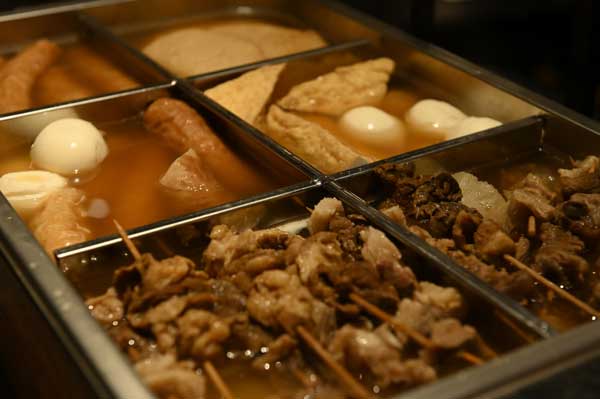
The Charm of Oden, Delicious Even on the Next Day
Another unique feature of Oden is that its deliciousness does not diminish even after a day.
The ingredients, having absorbed the broth over a long period, increase in depth and richness as time passes, maintaining the flavor even on the following day.
This feature is particularly appreciated when large quantities are prepared, or for post-party meals, enabling one to enjoy the dish without waste.
The Flavors and Culture Rooted in the Region
At first glance, Oden may seem like a simple dish.
However, the way the broth is made, the selection of ingredients, the simmering time, each household, and each store have their unique twists.
Specifically, regional specialties are sometimes used as ingredients, and enjoying the unique Oden of that region also leads to an appreciation of the local culture and flavors.
For example, in the Kanto region, it’s common to simmer in a dark soy sauce-based broth, while in the Kansai region, a light soy sauce-based broth is typically used, showcasing regional flavors.
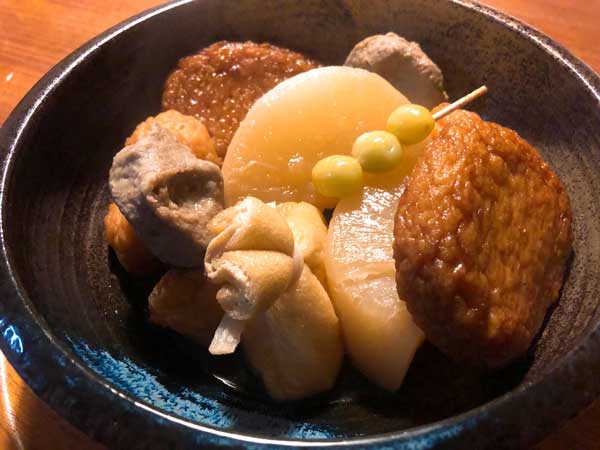
A Warm Respite with Oden
Enjoying Oden on a cold winter night, surrounding a warm stove, truly represents the essence of Japanese winter.
Oden, with its ingredients slowly simmered and absorbed the flavors of the broth, seems to represent the winter scenery of Japan itself.
Taking each ingredient in hand, bringing it to the mouth, and spending time leisurely, its warmth may ease some of the daily fatigue.
It’s a modest yet heartwarming time, warming not only the body but also the heart.
Introducing Classic Ingredients for Oden
Here, we’ll introduce 14 classic ingredients that make Oden the delectable comfort dish it is.
1. Daikon (Radish)
Arguably the most common ingredient in Oden, the daikon radish absorbs broth well, making it a preferred ingredient not only in Oden but also in other stews and simmered dishes.
To prevent bitterness, it’s important to blanch the daikon before adding it to the Oden broth.
Additionally, careful peeling and making incisions on the sides can elevate your daikon to a whole new level.
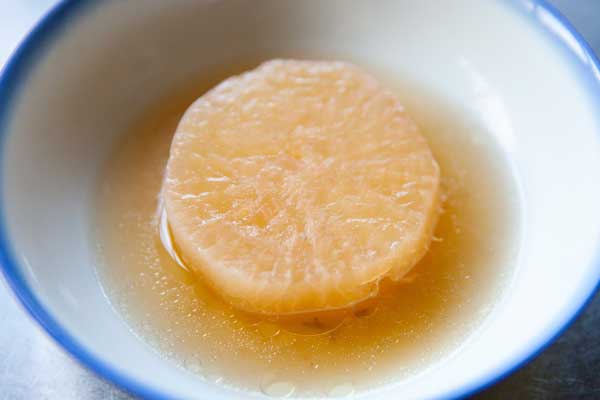
2. Konnyaku (Konjac)
Konnyaku may not be the most visually appealing ingredient, but it plays a vital role in Oden, absorbing the flavors of the broth.
To enhance its ability to absorb flavors, it is recommended to make diagonal cuts on the Konnyaku.
Before adding it to the pot, rub it with salt, leave it for 10 minutes, and briefly blanch it in boiling water to remove any impurities and odors.
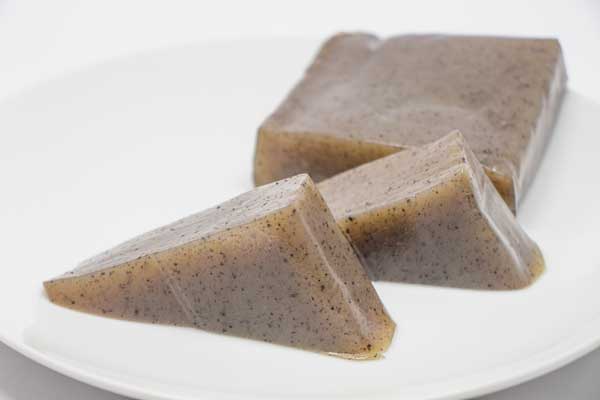
3. Boiled Eggs
Eggs are an indispensable ingredient for any Oden lover.
Preferences may vary between hard-boiled and half-boiled eggs.
If you prefer the former, boil for 12 minutes, but if you’re a fan of the latter, 6 minutes should do the trick.
It’s important to boil eggs separately, peel them, and then add them to the Oden broth.
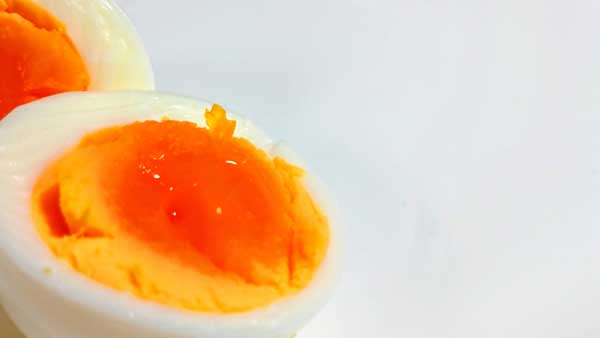
4. Chikuwa (Fish Cake)
Among the processed fish ingredients for Oden, Chikuwa is an undisputed classic.
When selecting Chikuwa for Oden, it is recommended to choose a larger, thicker variant.
To ensure that the umami does not escape, add the Chikuwa about 15 minutes before the Oden is ready.
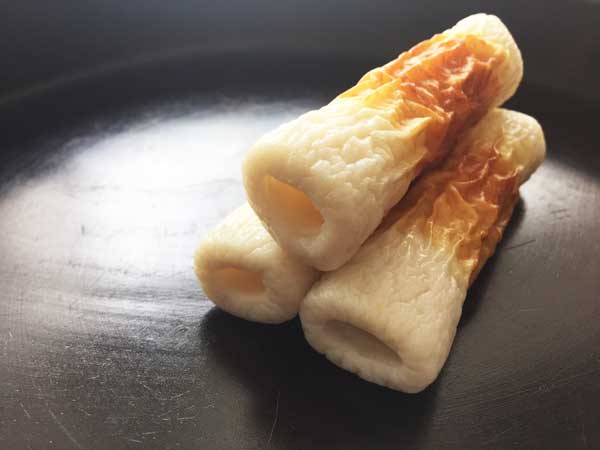
5. Hanpen (Fish Cake)
When it comes to Hanpen, Oden may be the first dish that comes to mind for many.
Just like Chikuwa, Hanpen is another essential ingredient for Oden.
Hanpen’s fluffy texture makes it prone to losing its shape and flavor, so it is best to add it to the broth right before serving.
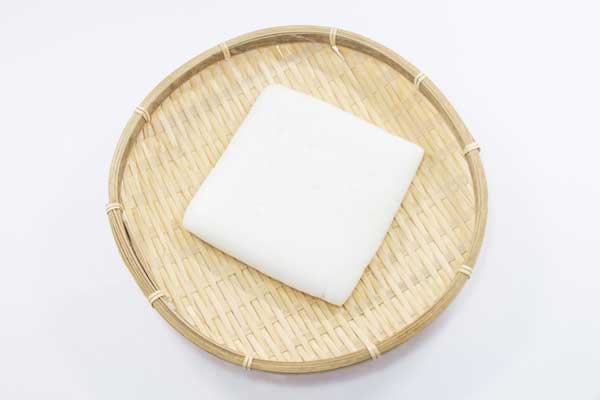
6. Kombu (Kelp)
Kombu, an essential ingredient for making broth, is also enjoyable to eat once cooked.
Though it is often discarded after the broth is made, why waste the potential goodness?
Tie the Kombu into knots to make it easier to eat and to match the size of the other ingredients.
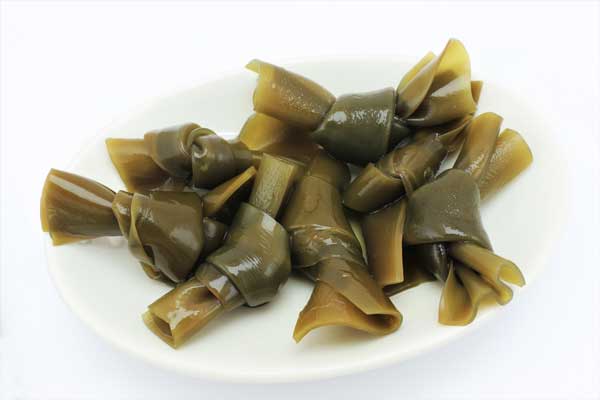
7. Mochi Kinchaku (Mochi Bag)
Mochi Kinchaku is a delightful pouch filled with mochi, which soaks up the Oden broth beautifully.
While ready-made versions are available, homemade ones can be filled with additional ingredients like cheese or mentaiko (spicy cod roe) for an extra burst of flavor.
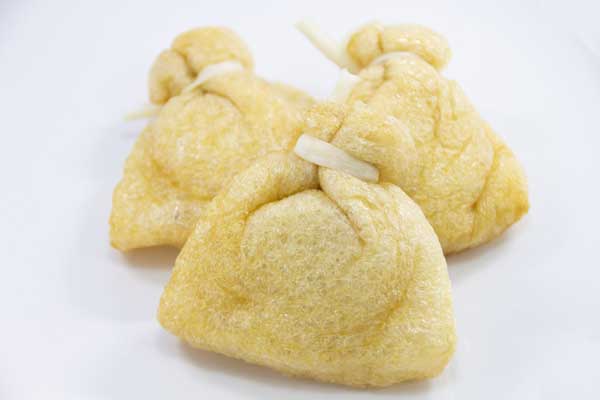
8. Shirataki (Konjac Noodles)
Shirataki offers a different taste and texture from Konnyaku.
Being more absorbent than block Konnyaku, it’s easier to work with.
To remove any unwanted flavors and impurities, treat Shirataki as you would Konnyaku – salt rub, leave for about 10 minutes, blanch, and then add to the broth.
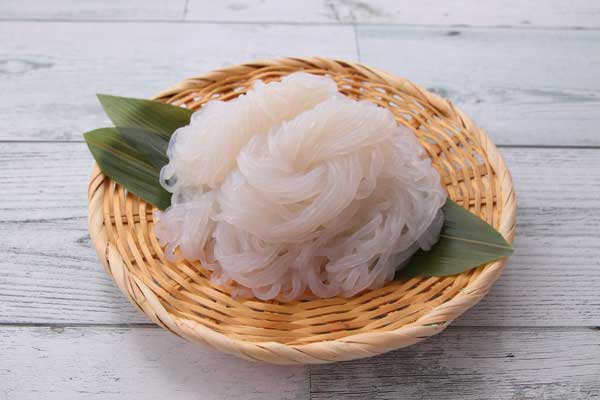
9. Potatoes
A staple in many dishes, potatoes are also perfect for oden.
The characteristics of potatoes can greatly vary depending on the variety.
For those who prefer not to have their potatoes fall apart in the stew, the May Queen variety is recommended, while Danshaku (Baron) potatoes are perfect for those who want the flavor to penetrate right to the core.
To prevent disintegration, it’s best to parboil the potatoes first.
After peeling, boil them slowly from water, let them cool down once they’re cooked.
After placing them in the broth, simmer them over low heat to prevent them from bouncing around.
This method will help prevent them from falling apart.
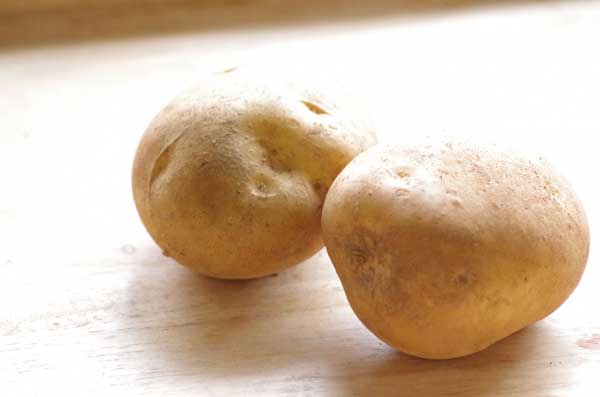
10. Beef Tendons
Adding beef tendons will instantly elevate your oden.
The classic way to prepare them is to briefly parboil the tendons, cut them into bite-sized pieces, then skewer them.
The water used for parboiling will contain beef broth, so it’s a good idea to remove any scum and fat before mixing it with the oden broth.
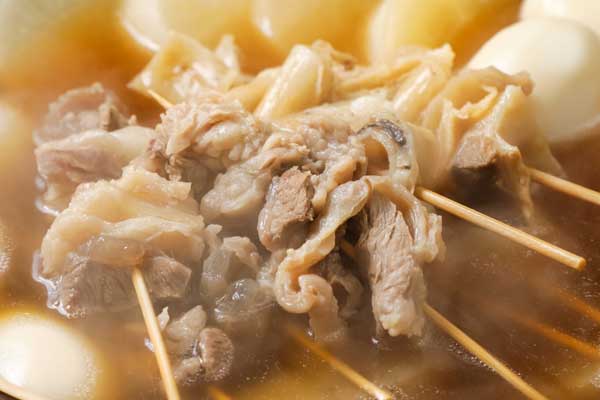
11. Chikuwabu
Chikuwabu and chikuwa may look similar, but there’s a big difference between the two.
Chikuwa is made from ground white fish, while chikuwabu is made from wheat flour, so their tastes and textures are very different.
Originally created in Kanto as a less expensive alternative to chikuwa, it is now a well-known ingredient throughout Japan.
Even if you’re not fond of fishy tastes, you can enjoy chikuwabu.
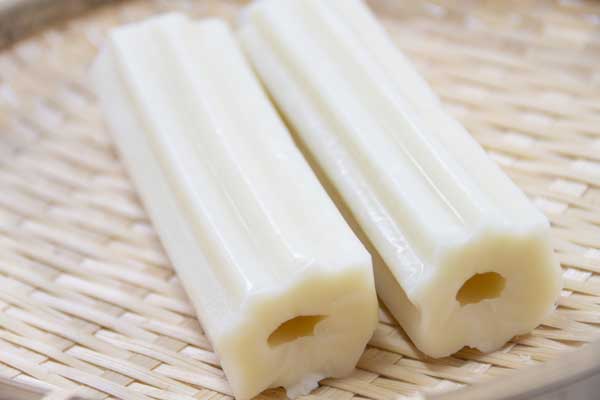
12. Ganmodoki
While it’s true that all “nerimono” (processed fish products) may look similar, making it hard to distinguish their differences, ganmodoki stands out as it is made from tofu with added vegetables, hence the base ingredients are quite different.
It’s an attractive food item for being meat-free and healthy.
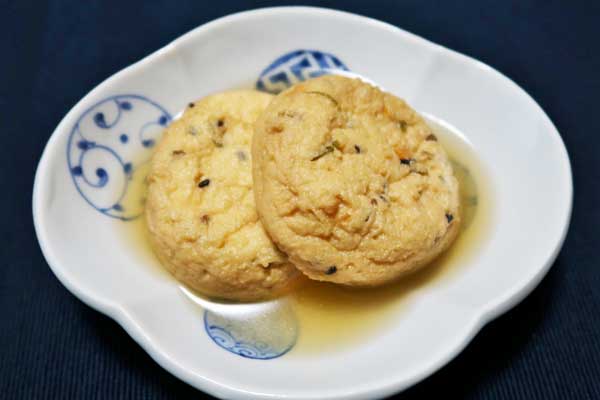
13. Satsuma-age
Satsuma-age is a type of kamaboko that’s made from ground fish and deep-fried.
When adding it to oden, remember to blanch it in boiling water to remove excess oil before use.
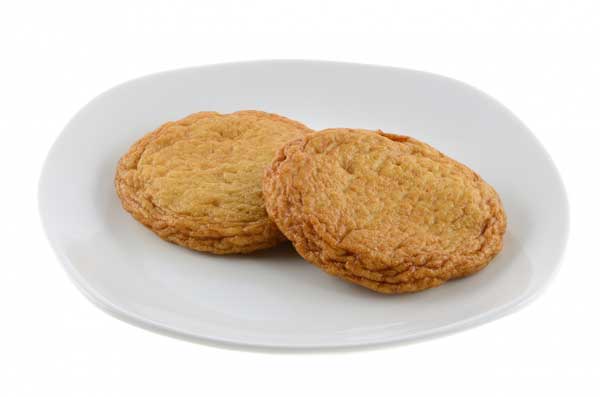
14. Gobo-maki
A type of satsuma-age, gobo-maki is burdock root wrapped in a fish paste.
It’s also called “gobo-ten” in western Japan. You can enjoy the unique flavor of burdock root, and it pairs perfectly with sake. Use these descriptions as a guide to write your blog post.
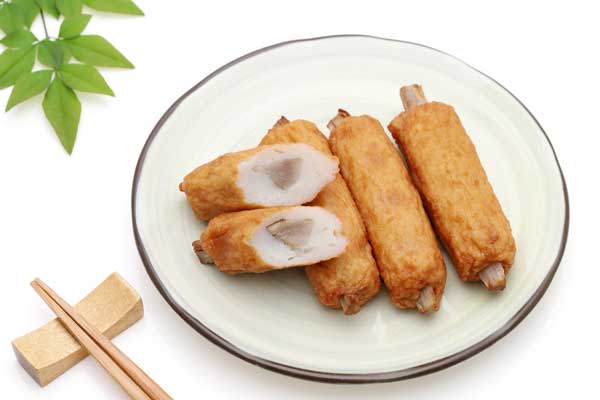
Oden Broth Recipe
The true essence of delicious Oden lies within its broth.
Here, we will unveil the secret of making homemade Oden broth.
Once you master this technique, you’ll be able to enjoy authentic Oden right in the comfort of your own home.
Ingredients (for 4-5 servings):
- Your choice of ingredients
- Kombu and bonito broth: 1.5L
- Soy sauce (preferably light soy sauce): 4 tablespoons (60ml)
- Mirin: 4 tablespoons (60ml)
- Sugar: 1 tablespoon
- Salt: 1/3 teaspoon
- Please note that the amount of salt may vary depending on the ingredients, so it needs to be adjusted accordingly.
Procedure:
-
First, let’s prepare the oden broth. Add soy sauce, mirin, sugar, and salt to the 1.5L of kombu and bonito broth. Remember, the taste can change depending on the salt content of the ingredients, so start with a 1/3 teaspoon of salt and adjust the taste just before eating.
-
Once the broth is ready, prepare your chosen ingredients. These should be pre-processed: peel and slice the radish, boil the eggs, slice the konnyaku thickly, and cut the processed fish cakes.
-
After the ingredients are prepared, add them to the broth one by one. Start with the harder ingredients like radish, and add the processed fish cakes at the end.
-
The most important point in cooking oden is the simmering time. The heat and the timing of adding ingredients are also crucial, but above all, it’s important to allow enough time for the flavors of the broth to permeate the ingredients.
-
The key to oden is to let it simmer slowly over time, enhancing its depth and flavor. Keep the heat low and make sure the ingredients do not overflow from the broth. By doing so, the ingredients will fully absorb the umami from the broth.
-
Lastly, adjust the taste again just before eating. By adding salt or soy sauce at this point, you can perfect the flavor.

Conclusion
Oden, a versatile dish enjoyed throughout the year, captivates with its flavorful broth and harmonious blend of ingredients.
With homemade oden, you have the freedom to customize and savor your preferred components, creating a warm and inviting dining experience for your loved ones.
In this article, we have provided a guide to the basic preparation steps, ingredient selection, and the secrets of mastering the oden broth.
We encourage you to embark on your oden-making journey at home.
Indulge in the comforting and delightful moments that this beloved dish brings, anytime and anywhere.



